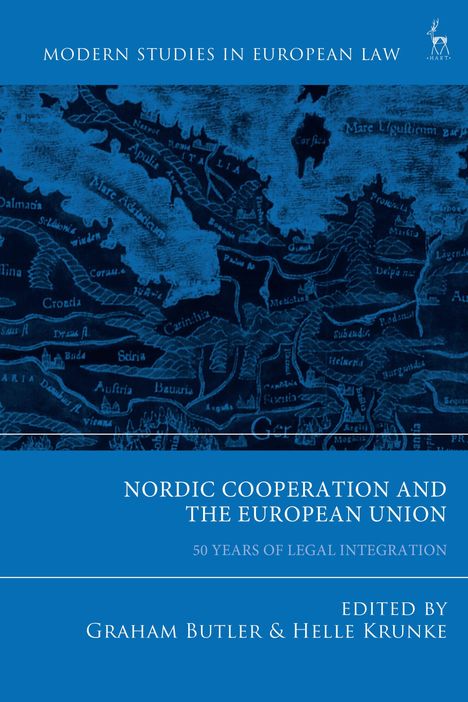Nordic Cooperation and the European Union, Gebunden
Nordic Cooperation and the European Union
- 50 Years of Legal Integration
Lassen Sie sich über unseren eCourier benachrichtigen, sobald das Produkt bestellt werden kann.
- Herausgeber:
- Graham Butler, Helle Krunke
- Verlag:
- Bloomsbury Academic, 09/2026
- Einband:
- Gebunden
- Sprache:
- Englisch
- ISBN-13:
- 9781509965700
- Umfang:
- 416 Seiten
- Gewicht:
- 454 g
- Maße:
- 234 x 156 mm
- Stärke:
- 25 mm
- Erscheinungstermin:
- 3.9.2026
- Hinweis
-
Achtung: Artikel ist nicht in deutscher Sprache!
Ähnliche Artikel
Klappentext
Nordic Cooperation and the European Union: 50 Years of Legal Integration explores the transformation of Nordic cooperation over the past half-century, shaped by the dynamics of European integration.
Initially rooted in informal, intergovernmental dialogue among Denmark, Finland, Iceland, Norway, and Sweden, Nordic cooperation now finds itself amidst deeper developments taking place in EU law and EEA law. After the Second World War, Europe embraced binding legal commitments vis-à-vis individuals and each other, beginning with human rights under the European Convention on Human Rights (ECHR), and later economic integration through the European Coal and Steel Community (ECSC) and then the European Economic Communities (EEC), which is today, the EU, and by extension, the European Economic Area (EEA). For the Nordic states, such developments have created dual loyalties: to each other, in the form of cooperation ; but also, to wider Europe, in the form of integration .
Given the differentiated form of legal integration with Europe in the Nordic states, and how the EU has transformed well beyond a mere form of economic integration, Nordic cooperation has taken on new meaning. Nordic Cooperation and the European Union: 50 Years of Legal Integration brings together academics, scholars, and judges to understand, elucidate, and explain the interplay of legal regimes, including the complex processes of legal systems and legal cultures adapting to each other over a time span of fifty years. It brings forth a new way of thinking about Nordic cooperation amidst wider European legal integration, adopting a comprehensive, comparative approach. It examines both the upward influence of the Nordic states on EU and EEA law, and the downward impact of EU and EEA law on the national legal orders of the Nordic states. Spanning five decades of developments, it offers a panoramic view of legal developments and anticipates the future role of Nordic cooperation when classical forms of such international cooperation are operating in parallel with EU and EEA law.



